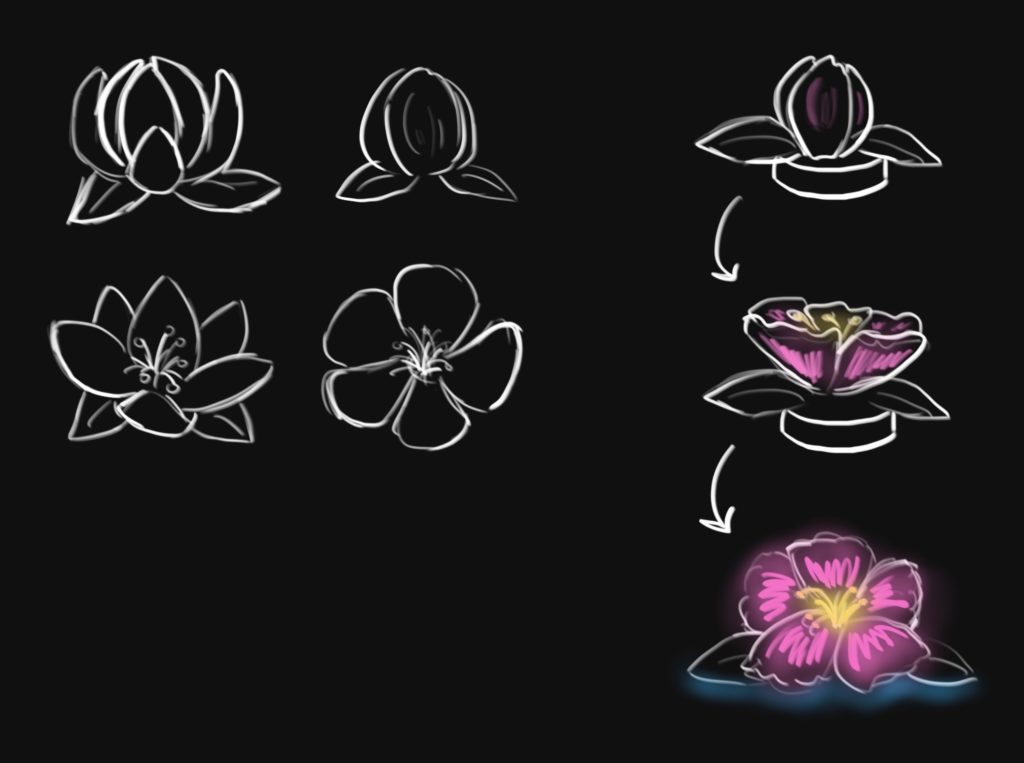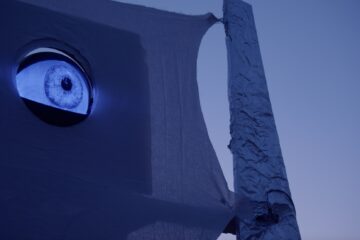Dhabia, Joseph, Salama, Maitha

Purpose of the Project
The desert is usually described as a barren place, where abundance seems impossible. There’s scarcity in water, resources and wildlife. What we forget however, is the reliability and consistency that the desert offers to us. There is a lot of history that is in the sand the desert contains, it is rich and seems mysterious. This network of flowers aims to externalize the potential that the desert hides, whether be it in the form of oases or knowledge buried within its dunes.
In addition, the deserts of the UAE were once lakes in the past, which is something that contrasts directly to the barren landscape that exists today. The concept of a lotus flower being the central flower is a nod to this, to draw upon the past of the desert and what once was.
At night, the only light is usually from the moon (or the stars, but that’s kinda debatable). We wanted to create something that would respond directly to this absence of light with light of its own; then to create artificial “life” from that artificial light. A soft glow is something that we want in order to create a sense of comfort and guidance in the desert, a sort of light oasis.
The main we want to portray with this project include comfort, safety and community.
Original Concept Description
To put it simply, we want to create a network of flowers that communicate with light sensors and light up based on the input that they receive. There will be a main flower, and this one communicates with outside factors (the sun). This main flower will bloom once the sun sets and when it does, the other flowers will get the signal and also light up. We also want to try and have circular neopixels under the smaller flowers, casting blue on the sands beneath them. This will give off a mirage illusion, further exaggerating the safety factor in the project.
Mechanics
- LED
- Neopixel
- Servo motor/ DC motor
The idea is to have a set of flowers, one central and the others periphery. The main flower, presume of the largest flower, will have a light sensor attached to it which allows it to know or detect low light environments. When it detects this, the flower will bloom open using motors that are attached to its petals. The specifics of the mechanism that opens the flower is still under debate, because there are various ways to make this work. Another idea we touched upon in our discussion of the project was the use of metal strips that flex when applied with an electrical charge. This creates a smooth opening of the petals which is something that we are looking to do.
The second set of flowers which are the periphery flowers, will activate also with light sensors. The difference between the periphery and the central flowers is that one set of flowers react to the absence of light–– the central flower ––while the other set of flowers react to the existence of light. These flowers like the central flower, bloom when the sensors activated. This will be performed using a similar method to the original flower.
The flowers all need to be connected to the main board, which may require the use of wires that extend beneath the sand and connect the flowers together. This could also be a way to signify the concept of plants in the desert, which oftentimes have longer roots to absorb more water or to create a larger surface area from which water can be drawn.


